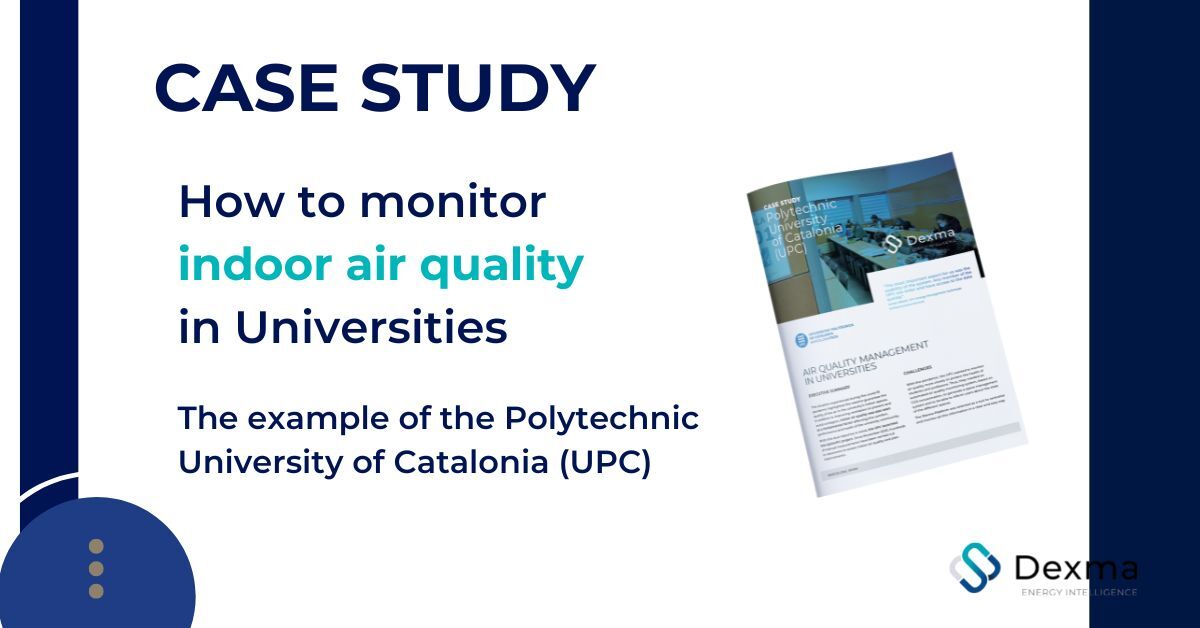Indoor air quality management in universities : a case study

As someone who works in the education sector, you're well aware of the crucial role that Indoor Air Quality (IAQ) plays in maintaining a healthy environment for students, teachers, and other visitors. Whether it's classrooms, libraries, or other areas, it's essential to maintain optimal IAQ levels to promote the well-being and productivity of everyone who uses these spaces
Indoor air quality monitoring has been a topic of discussion for years, but it has gained even more importance since the 2019-Covid outbreak. With many facilities now making it a standard practice, it's crucial to understand how indoor air quality affects the university sector. In this article, we delve into the issue of indoor air quality at universities, using the Qaire project implemented at the Polytechnic University of Catalonia (UPC) as a case study.
What is indoor air quality?
When it comes to indoor air quality, a variety of factors can affect the air we breathe, including pollution levels, CO2 presence, humidity, and the presence of volatile organic compounds (VOCs) and particles. But how does indoor air quality differ from outdoor air quality? This is a valid question, and the answer lies in the fact that once outside air enters a building, it's subject to a host of other factors. For instance, if a space is enclosed and occupied by a lot of people, the air can become saturated with natural emissions from breathing, potential viruses, and more.
If you're interested in learning more about monitoring air quality in your buildings, we have several other articles that delve into this topic in more detail. For instance, our article on measuring air quality in buildings provides a comprehensive guide on how to effectively monitor and improve indoor air quality.
Why monitor indoor air quality in educational spaces?
While health is a primary concern, good indoor air quality has several other positive effects, such as reducing absenteeism, promoting well-being, and improving learning outcomes for students. Additionally, it can help limit the transmission of viruses and other harmful airborne particles.
Air quality can have a significant impact on a student's ability to concentrate and their overall academic performance. That's why it's crucial to measure and monitor indoor air quality using advanced tools like Dexma Analyse. By analysing data, you can ensure that air quality levels meet established standards and make improvements if necessary. This can lead to a more productive and healthier learning environment for students and staff alike.
In the UK, the situation is worrying. According to a recent study (2021) commissioned by the UK's leading respiratory charities, Asthma UK and the British Lung Foundation, more than 25% of British schools and colleges are located in areas with hazardous levels of air pollution. The research revealed that out of 31,000 educational establishments, 8,549 schools and colleges (27%) are situated in areas where levels of fine particulate matter (PM2.5) exceed the guideline limits recommended by the World Health Organization (WHO), which recommends that concentrations of PM2.5 should not exceed 10 μg/m3. The current legal limit for PM2.5 in the UK is 20 μg/m3, twice the limit recommended by global health experts.
Maintaining indoor air quality and reducing energy consumption
Indoor air quality control is closely intertwined with building maintenance and energy management. These factors must not be considered in isolation but rather as an interrelated system. Maintaining mechanical ventilation in good condition, such as filters, equipment, and cleanliness, and ensuring proper ventilation of spaces can optimise HVAC (Air Conditioning, Ventilation, Heating) systems, resulting in better energy consumption. As a result, everything is interconnected.
Conversely, poorly maintained equipment and inadequate ventilation can cause a decline in indoor air quality and require more energy to achieve acceptable levels of quality and comfort. For instance, a well-maintained building with functioning machinery will help maintain acceptable levels of indoor air quality and comfort.
Indoor air quality in universities: the case of the UPC
The Polytechnic University of Catalonia (UPC) has a strong commitment to energy efficiency and sustainability. To this end, it has been continuously monitoring and optimising its energy consumption for several years to reduce costs and environmental impact.
However, the COVID-19 pandemic has highlighted the importance of indoor air quality in addition to energy management. The university recognised the need to ensure a certain level of air quality in various areas of its campus facilities for the well-being, performance, and health of its community. Therefore, indoor air quality became an essential factor for UPC's energy efficiency and sustainability plans.



